Lights at Butler Field, Principal to Retire, Health Reserves and More from the Board of Education
- Details
- Written by: Joanne Wallenstein
- Hits: 6237
 The Board of Education discussed lights at Butler Field, the health reserve, school security, construction and accepted a retirement at their March 11 meeting. The entire meeting is available to view online but here are few items of interest.
The Board of Education discussed lights at Butler Field, the health reserve, school security, construction and accepted a retirement at their March 11 meeting. The entire meeting is available to view online but here are few items of interest.
Health Insurance Reserves
In an effort to determine just how much the district needs to hold in health reserves, the board heard a presentation from consultant Patrick Cowburn on setting reserves for the district’s self insured health plan.
The consultant recommended that the district place $4.6 million in the health insurance reserve and an additional $4.6 million as an accrual to cover 3 months of current claims for a total of $9.2 million. Though the total amount of $9.2 million remains the same as the number in the proposed 2019-20 school budget, the consultant recommended that the total funds be split evenly between the reserve funds and an accrual.
There are no hard and fast rules for setting these reserves, but general municipal law recommends that the district hold a minimum of 25% of projected claims in accrual, between 15% and 24% of projected premiums in a claim stabilization reserve and 7% of projected premiums in a surplus account. Using these recommendations the consultant determined that Scarsdale’s reserves should be between $8.5 mm and $10.2 mm and he therefore recommended 9.2%.
Here is the analysis: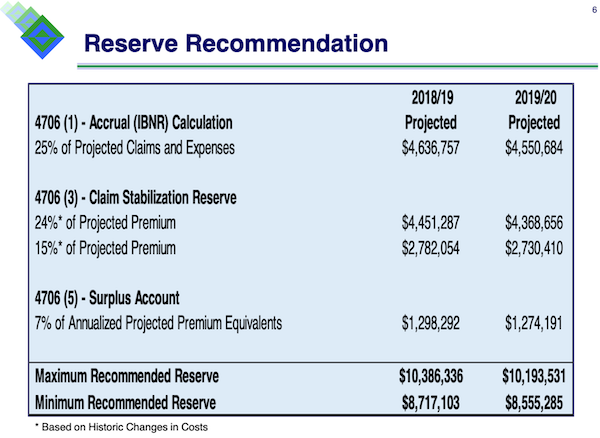
During the discussion, Board Member Bill Natbony asked if that reserve could be reduced so that funds could be returned to taxpayers or spent on another expense. He suggested that if the Board allocated the minimum recommendation of $8.5 mm, there would be a one time saving of $500,000.
However Scarsdale School’s Treasurer Jeff Martin and Assistant Superintendent for Business Stuart Mattey cautioned that if the district reduced the budget by that amount and there was a shortfall, they would need to fill the gap by raising taxes next year to refill that reserve. Nina Cannon asked if we could reduce the budget on a one-time basis and “return these funds to the taxpayers.” Martin explained that if the district makes that reduction this year, they would need to continue to reduce other budget lines next year to make up for the shortfall.
Board President Scott Silberfein asked other board members for their views:
Chris Morin said, “I don’t have a rationale for one number vs. another,” while Pam Fuehrer said, “I would cut it if there was something else we needed to fund” and later said,”I don’t want to create a bigger hole to fill next year.”
Stuart Mattey said, “We try to avoid hills and valleys – and try to keep the budget constant – maybe we should drop it over two or three years, for example $250,000 and $250,000.”
Lee Maude “My problem is that once the money is in reserves, we don’t have a lot of control over it. Do we need to go from 2 months of accrual to 3 months? I will look to future boards to take a look at it. We should spend money in the budget for what it was intended – rather that do transfers to fund other items.”
Cowburn pointed out, “In 2014 the reserve dropped to $50,000 because of claims from preceding years. It can be difficult to have to fund that reserve moving forward. From my standpoint it is easier to save than to regenerate. Once you give away money it’s gone.”
Silberfein asked what impact reducing the reserve could have on the district’s bond rating from Moody’s. Martin said the district did get a negative rating when they let reserves drop. Silberfein suggested the board defer the decision until the March 25th meeting or wait until next year and analyze it again. He was concerned about reducing reserves due to the Moody’s rating.
Retirement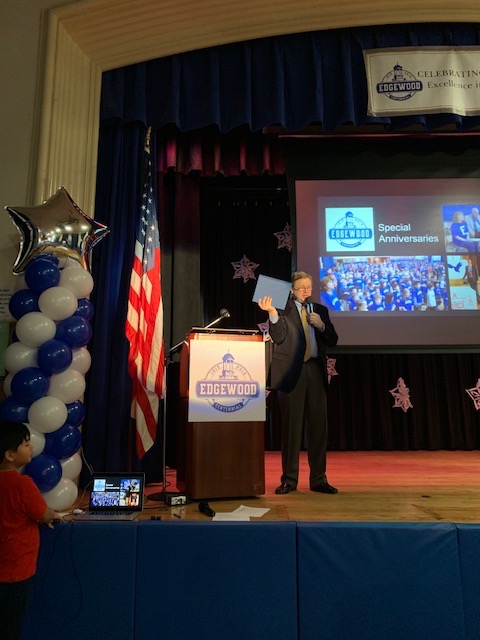
Edgewood Principal Scott Houseknecht announced that his retirement effective June 30, 2019 after 29 years in Scarsdale.
In his retirement letter, Houseknecht wrote, “ the Edgewood faculty, staff, parents and students truly make Edgewood School a special place. I’ve had many conversations with alumni through the past decades, in a couple of cases going back to the early 1920’s. Through these conversations and from talking to former teachers and parents, I know that Edgewood has long been a close-knit community with a shared vision, where the needs and interests of our students drive practice. I feel fortunate to have been entrusted with the leadership opportunity as Edgewood’s sixth principal to continue that long tradition, and I hope I leave having established a climate for those who remain to take Edgewood to an even higher level.”
The district will now need to fill two principal positions, as Fox Meadow currently has an interim school principal after Duncan Wilson left in June 2018.
Advocacy
The Board considered signing a letter written by Amy Paulin that objects to cuts in state aid, some of which affect Scarsdale and others that do not. They agreed that the proposed decrease in state building aid from 10% to 5% could adversely affect Scarsdale later on. They also agreed that the STAR rebate should be sent in a check to residents rather than offered as a deduction to property tax bills. The Board agreed to draft their own version of the letter incorporating items 2-6 to send to Albany. Review the letter here:
School Security
District Security Chief Mike Spedaliere announced the implementation of a new visitor screening system for the schools.
The school will implement a new Visitor Management System that will screen visitors to the schools in late April and May. The visitor will be asked for their driver’s license to be scanned and compared to the sex offender files in 50 states and any local alerts. The visitor will need to give their destination in the building and the monitor will call to make sure the visitor has an appointment to enter before they are allowed access to the building. The visitor will receive a name-tag with their name, destination and time of entry. The school will come up with regulations on how the monitor should handle a variety of situations including greeting, screening and exiting.
Facilities
Stuart Mattey announced that plans for the renovation of Greenacres School had just cleared the state education department and that the district would send the project out to bid this week. The bids will be on the agenda of the April 29 Board of Education meeting. The district hopes to begin the work this summer. Other summer work will include a new roof for the Heathcote School and the construction of security vestibules which were approved by the education department and are now out to bid. Those bids will be on the agenda of the April 8, 2019 meeting of the BOE. Middle school hot water heaters have been installed.
Mattey announced the formation of a Greenacres construction committee and was looking for three community representatives with construction expertise to serve on the committee. He wants to hear from those who are interested by March 22. Interested? Email him here. Mattey said the administration would meet with parents at Greenacres on May 1 at 7 pm to review updated construction and safety plans. Silberfein said the Greenacres Neighborhood Association had also asked for a meeting on school construction and wondered if it could be done at the same time.
Lights for Butler Field
Athletic Director Ray Pappalardi came before the Board seeking approval to take the next steps towards installing lights on Butler Field. He reported that he held many meetings over the past three months and heard community concerns about the lights, noise and evening games. He said that since the lights would be on Village property and the Village has a noise ordinance in effect from 11 pm to 7 am, the Village would also have some role in the approval process.
Pappalardi was looking to the Board for approval to go through the SEQRA process, which is an environmental impact review and was also in need of a “Memorandum of Understanding” between Maroon and White and the school district. The initial cost of the SEQRA review would be $1,250.
The board had a lengthy discussion about if and how donors would be recognized and determined that they would need to come up with a donor recognition policy.
Board members varied in their views on how donors should be recognized with Alison Singer arguing that it would be up to Maroon and White to recognize their own donors – and not to display their names on school property. Others said that donors’ names were already present at the high school on pavers at the field, in the courtyard and on plaques in the school. Nina Cannon said, “I do feel there is an appropriate way for a public institution to recognize our donors – working at a City University – there are few places that are not named. There is a way to tastefully recognize our donors.”
At the end of the conversation, the board agreed that they had given support for the installation of the lights, but that they needed to define if and how donors would be recognized and therefore said that Maroon and White should be clear that this policy had not yet been set. Though the Board had no objections to Maroon and White beginning their fundraising, they said that no promises should be made to donors about how they would be recognized at the school.
The board agreed that Pappalardi could begin the SEQRA review, subject to agreement by Maroon and White to pay for it.
As for the memo of understanding, Ray Pappalardi said the memo would need to define usage, curfew times and provide guidelines on noise and scheduling. Dr. Hagerman asked for a fuller evaluation of the ongoing costs of the lights and an understanding of what costs the district might incur down the line.
A Peek Into What Makes Entrepreneurs Tick
- Details
- Written by: Laura Halligan
- Hits: 5967
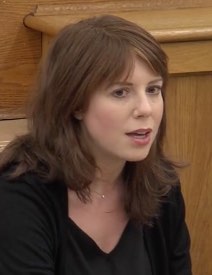 Lindsay KaplanOn Wednesday 2/27, four young, innovative entrepreneurs shared their individual paths to success with Scarsdale students and the community as part of a Scarsdale Schools Education Foundation (SSEF) program, “Bringing Young Entrepreneurs Together to Share Their Insights.”
Lindsay KaplanOn Wednesday 2/27, four young, innovative entrepreneurs shared their individual paths to success with Scarsdale students and the community as part of a Scarsdale Schools Education Foundation (SSEF) program, “Bringing Young Entrepreneurs Together to Share Their Insights.”
Moderated by Lisa Yokana, Scarsdale High School’s STEAM coordinator, the panel discussion included Michael Duda, of Bullish; Poppy Jamie, of Happy, Not Perfect; Lindsay Kaplan, of Chief; and Christina Liva, of Yay Lunch.
In opening the second of two sessions, Scarsdale Schools Superintendent Thomas Hagerman said, “One of the areas we’ve been focused on as an outgrowth of our academic vision… is entrepreneurship. Tonight, we have the opportunity… to become more informed about this work and some of the ways we engage experts and influencers to inspire and inform our students.”
Every Story Has a Beginning
Christina Liva began the discussion by recounting her inspiration for Yay Lunch, a service that delivers healthy, fresh meals daily to “where kids learn and play.” She launched the company two years ago, after her son began school and she was “really surprised by the fact that there were these awesome schools… and the last thing that seemed to turn over was the food.” She added, “Either the schools didn’t have a program or they had an ad hoc program… (I asked) where is the solution here? What is a scalable solution?”
Michael Duda, whose company, Bullish, is “one part strategic creative agency and one part consumer investment firm,” took the plunge into entrepreneurship after years of working in the marketing sector. “I got sick and tired of Wall Street looking at my people as an expense … when numbers weren’t going to be there, (but) when 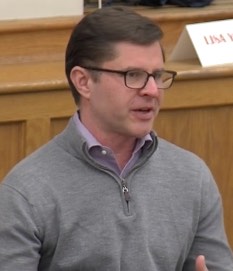 Michael Dudamarketing can be done well and can be brand-building.”
Michael Dudamarketing can be done well and can be brand-building.”
Poppy Jamie, who founded two startups (one is the fashion accessories company, Pop & Suki), discussed “her favorite” – Happy, Not Perfect – which she described as “a gym for your happiness.” In building her wellness app and related products, she drew inspiration from her parents, particularly her psychotherapist mom. “At the age of five, we get taught how to brush our teeth, but we never get taught how to look after our minds… it’s the most overactive muscle, but we totally forget to take care of it. ”
Lindsay Kaplan is a new entrepreneur, having recently co-founded Chief, a private network of women executives who “cross-pollinate power across industries and disrupt power dynamics from the top down.” After numerous professional successes, one day, she looked around and noticed an increasing number of male executives in her firm’s boardroom. Kaplan then decided to focus her efforts on supporting fellow female executives. “We created a network, community and support system for people who deserve to be selfish… and should enjoy the camaraderie and network that, often… white men get in the workplace.”
There’s Always Bumps in the Road
Of course, nothing goes according to plan. When building a business, it’s wise to anticipate problems, but what kind and when? These four faced their share of challenges as they blazed new trails and spoke about the biggest surprises they encountered along the way.
When Yokana asked the panelists about their biggest challenges, Liva responded that she quickly discovered the need to pivot in order to keep her business on track. “It’s a challenge to make sure your mission is always at the forefront and stay agile in other ways… and open to change.”
Kaplan was caught off guard by quick success. “I didn’t know we would have traction so quickly… right now, the struggle for me and my team is focusing on setting goals and knowing that projects aren’t serviceables… it’s ok to get a B+ in business… it’s OK to get a B… because you’re a project and what you’re doing day-to-day should ultimately be in service to create a strong, impactful business.”
Jamie encountered difficulties in selling the basic premise of her business. “Trying to educate people about mental health has been a challenge… that it is a daily practice… but I’m actually seeing that start to ease up. People are becoming more knowledgeable about being humans (and what humans need).“
Duda spoke about more personal concerns in launching a business, saying, “When you’re an entrepreneur… it’s all encompassing… It’s more purposeful than just a pass/fail in business. It consumes what we do… There are a lot of business challenges; I don’t care about that. It’s the stuff that impacts your life; the highs can get really high and the lows can get really low… I don’t think I was prepared for that, emotionally.”
Now, The Practical…
 Poppy JamieYokana then brought up the practical need for raising capital and finding investors, often a challenge for female entrepreneurs.
Poppy JamieYokana then brought up the practical need for raising capital and finding investors, often a challenge for female entrepreneurs.
Jamie explained, “As a young woman, I was cultured to be self-deprecating, polite… (told) don’t embellish anything… A lot of women founders are not as confident, and we should (be), because we have the same companies and the same numbers as others who go into the room.”
Kaplan agreed and added, “Raising (capital) is a little like dating. It’s a confidence game. It’s about knowing your numbers; it’s knowing your worth… It’s a little bit like gambling… and being aggressive and smart and coy. I think if women… think about it as more like a game and less about being about (them), (they can be) phenomenal at pitching.”
Liva followed and mentioned the need to be “real” in speaking to investors, “When I first started pitching, I was eight months pregnant… most of the people I (spoke with) were men… and no one wanted to address it, because you don’t want to be ‘that man’ …But, the one who did address it ended up being an investor in the company… because I got the chance to talk openly about what it is to be a mother, and what it is to be a mother and a business owner, and how that’s a positive and not a negative.”
Duda acknowledged the difficulty for female founders, saying, “Raising capital is tough… and for women, it is, notably, and the data supports this, much tougher… People tend to invest in people they like… and when you look at private equity or when you look at VC (venture capital), the majority of the humans there are white guys from the Ivy League, and then the Stanford tree… Raising capital is hard and harder for some when it shouldn’t be…. (But) if you don’t have conviction behind your idea that’s obvious, it’s going to be tough.”
The panelists also shared their thoughts about failure, and its role in ultimately achieving success.
Jamie’s view of failure was that it was an integral part of an entrepreneur’s job. “It’s inevitable… you are going to hit bumps along the way… The fun part of entrepreneurship is finding that way around… always moving forward and finding solutions.“ She later followed up by saying, “So many people don’t move ahead because they fear failure… we need to redefine it; it shouldn’t prevent anyone from doing something.”
Kaplan added, “I learned so much more in failure… the hard part is digging yourself out of failure; it provides good lessons. I’m pleased that I dug myself out of failure and didn’t wallow in it.”
Duda stressed the importance of failure as part of an organization’s growth. “We don’t celebrate or understand what comes with failure…. Failure happens… it’s part of the process. But, when you’re going through it, it’s not easy… Peloton almost went to Chapter 7 twice… Failure is everywhere; it just doesn’t’ get headlines unless it’s really bad.”
Liva reiterated that failure is a necessary part of growth and added, “Pressure tests you, along with negative feedback… it’s good to have an advisor in place to tell you what feedback to take seriously… Having some sort of mentorship or advisory to help you navigate feedback is helpful.” Later, she added that you need to critically assess your efforts, and “say, this part of it failed, but what can I use to make something else?”
All Hail the Weirdo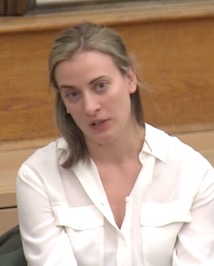 Christina Liva
Christina Liva
Yokana then asked these entrepreneurs to discuss what they believed the future of work would look like and how today’s students should be prepared. Jamie responded first, saying, “My problem with education is that it’s training everyone to think in the same way.” She stressed the need for creativity and innovation, and advised students to “Be weird, be abnormal… you’ll be the person thinking outside the box.”
Kaplan concurred, stating, “There’s so much power in being the weirdo. It’s healthy; you’re an underdog; you’re thinking about things differently. We are clearly becoming more automated, and the jobs that will be left are the jobs for the creatives… the people who think differently, with their words and ideas.”
When looking to the future, Liva advised, “We don’t know what our kids will be working with... We don’t know the industries of the future. The most you can do is prepare your child to be an emotionally intelligent human being… to be a well- rounded person.”
Duda stressed the importance of wondering why. “Students who are curious and question ‘why?’ will win…. There was a student here earlier who asked how to get an internship at a startup and I thought, ‘She’s going to win.’ I don’t care what her GPA is… Curiosity... You can’t coach that; you can feel it.”
Yokana’s last request for the panelists was for them to share the “number one skill” that helped them get to where they are now. Kaplan was quick to respond, and said, “I reject the lack of female representation… my special skill is rejecting the norm, and trying to envision what is it that is separating me from those 80 years, 200 years from now when we will get to parity.”
Jamie stated that her greatest skill was “Saying yes and not really knowing what it would lead to… There’s, probably, a great naiveness to saying yes… but it has led me on a peculiar, and interesting journey.”
Duda responded that having empathy was most important in his path. “Since our job is to try and find entrepreneurs, and invest in the crazy… I try to be empathetic to what the person in front of me is saying, and stay naive enough to say ‘OK, this could work.’ We love investing in… entrepreneurs because they don’t see the reasons why they should fail.”
Liva credited “grit and perseverance, and not having much to fall back on” in driving her success. “It’s about not taking no for an answer and keep going.”
SHS Goes International During School Break
- Details
- Written by: Alexandra Wilson
- Hits: 4901
 Members of SHS band at Blarney Castle and Gardens in Ireland.Scarsdale students travelled far and wide this February break for various school trips. There were foreign exchange trips to Heidelberg, Germany and Madrid, Spain. In addition, the school’s Wind Ensemble performed in Ireland, the Choir is in France, and the Orchestra is in Austria.
Members of SHS band at Blarney Castle and Gardens in Ireland.Scarsdale students travelled far and wide this February break for various school trips. There were foreign exchange trips to Heidelberg, Germany and Madrid, Spain. In addition, the school’s Wind Ensemble performed in Ireland, the Choir is in France, and the Orchestra is in Austria.
For the trip to Heidelberg, six Scarsdale students stayed with six German students of Elisabeth Von-Thadden Schule for 11 days. “The focus of the exchange is cultural, specifically around questions of identity, multiculturalism, and pluralism in our modern globalized world,” said SHS teacher and trip head Carlos Bedoya. The Scarsdale students had the opportunity to speak with Turkish Muslims in Manheim, Germany and to visit many sites, such as the Neckeralz concentration camp and the National Art Gallery. When the German students visit Scarsdale in March, they will visit Ellis Island, the 9/11 Museum, and other sites. The aim of these experiences is to help the students grasp the way the United States and Germany have dealt with certain issues and how minority groups have struggled in those respective places. The students will also spend plenty of time in SHS and Elisabeth Von-Thadden Schule to immerse themselves in their different high school cultures.
The Spanish exchange is between SHS and Colegios Ramón y Cajal, Madrid, and the goal is to experience life the way a teenager would in a different country. The first leg of the trip took place in October, when 12-20 Spanish students were paired up with Scarsdale students and stayed in their homes for a couple of weeks. The Spanish students attended SHS with their hosts and visited landmarks in New York City. From February 8th to the 21st, SHS students were in Spain with two faculty chaperones to complete the second leg of the trip. When they were not attending Colegios Ramón y Cajal during the day, the students were touring Madrid, Toledo, El Escorial, Segovia, and Cuenca and seeing various sites.
The school’s Wind Ensemble traveled from February 13th until the 22nd and spent three nights in Cork, three in Dublin, and two in Belfast, Ireland. They performed in each of these cities, for a total of three concerts. In between their rehearsals and performances, they visited sites such as the Rock of Cashel, St. Patrick’s Cathedral, the Giant’s Causeway, and various castles and attractions.
 Scarsdale Seniors in Madrid.
Scarsdale Seniors in Madrid.
The Choir spent February 18 – 23 sightseeing and performing in France. Between informal singing and joint concerts with local schools in Paris and Mougins, the group saw the most famous sites in Paris and went on walking tours to immerse themselves in the culture. Sites include the Louvre Museum, Notre-Dame, and many more.
The Orchestra completed an eight-day performance tour of Austria and Hungary from February 15th-22nd, where they are performed three concerts, two of which were joint concerts with different local schools. Since Austria is the place where Wolfgang Amadeus Mozart spent most of his life and a location in which Ludwig van Beethoven spent plenty of time, this trip is a very educational one for the Scarsdale orchestra.
Hopefully, as the students trickle in the US again, they’ll shake off their jetlag and bring these cultural experiences to SHS with them.
You're Invited to Meet a New Generation of Entrepreneurs
- Details
- Written by: Joanne Wallenstein
- Hits: 4783
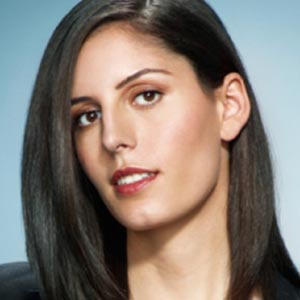 Soraya DarabiThe Scarsdale Schools Education Foundation and Scarsdale High School invite you to an evening in support of the Scarsdale Fellowship for Social Entrepreneurs. They invite the community to join them when they convene leading entrepreneurs to share their insights and inspire future generations.
Soraya DarabiThe Scarsdale Schools Education Foundation and Scarsdale High School invite you to an evening in support of the Scarsdale Fellowship for Social Entrepreneurs. They invite the community to join them when they convene leading entrepreneurs to share their insights and inspire future generations.
Bringing Leading Young Entrepreneurs Together to Share Insights
Moderated by Lisa Yokana, SHS Steam Coordinator
Wednesday, February 27th - SHS Little Theatre
7pm - 8:15pm: Open to the Public
Soraya Darabi: Founder, Trail Mix Ventures; Co-Founder, Foodspotting and Zady
Trail Mix Ventures invests in companies focused on sustainable well-being, that help both workers and entrepreneurs cultivate talent, and invests in brands focused on consumers identifying with passions and purpose. Soraya began as the Manager of Digital Partnerships and Social Media at The New York Times. Soraya made Fast Company’s “Most Creative People,” Inc.’s “30 under 30,” and Fortune’s “40 under 40.” She was twice named a “Mentor of the Year” by TechStars.
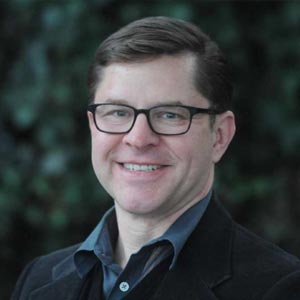 Michael DudaMichael Duda: Founder, Bullish; Founder, Consigliere Brand Capital
Michael DudaMichael Duda: Founder, Bullish; Founder, Consigliere Brand Capital
Bullish is an Accelerator Agency for businesses living early in an S-curve. Born out of Consigliere Brand Capital, Bullish is one part Strategic Creative Agency and one part Consumer Investment Firm that deploys capabilities from both worlds to help brands speed the transformation of opportunities into outcomes. Mike has worked on a wide range of brands, including Birchbox, Casper, TripAdvisor and Under Armour. Named one of Crain New York’s “Top 40 under 40,” Business Insider’s “Top Investors” and ADWEEK’s, “Best Advertising Voices on Twitter.”
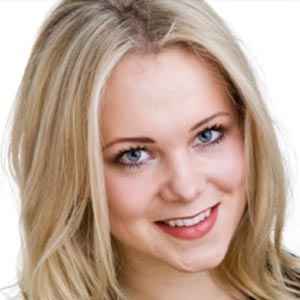 Poppy JamiePoppy Jamie: Founder, Happy Not Perfect; Co-Founder, Pop & Suki
Poppy JamiePoppy Jamie: Founder, Happy Not Perfect; Co-Founder, Pop & Suki
After launching “Pillow Talk with Poppy,” Snapchat’s first chat show, Poppy received hundreds of messages from viewers about their stress and anxiety. Happy Not Perfect was born out of this need to help manage mental well-being. She delivered the TEDx Talk “Addicted to Likes,” which focused on the harmful effect social media has on mental health. Poppy also co-founded accessories brand Pop & Suki with actress Suki Waterhouse. In 2017, Forbes named Poppy to its “30 under 30” list.
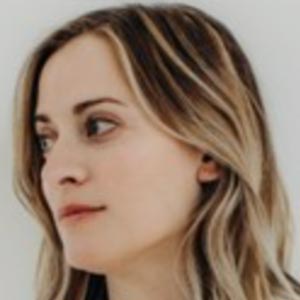 Christina LivaChristina Liva: Founder, Yay Lunch
Christina LivaChristina Liva: Founder, Yay Lunch
Yay Lunch’s mission is to make it easy to give kids healthy lunches they’ll love in the freshest and least wasteful way. It means no food boxes shipped around the country, no unnecessary packaging to throw out, and no gases or film to keep food from spoiling. Yay Lunch delivers healthy meals made fresh daily by vendors and delivered directly to where kids learn and play.
School Board Reviews Pros and Cons of Lighting Butler Field
- Details
- Written by: Joanne Wallenstein
- Hits: 5128
 Scarsdale Athletic Director Ray Pappalardi continued to seek approval for a proposal to install lights at Butler Field at Scarsdale High School at the Board of Education meeting on February 11, 2019. The state of the art LED lights are estimated to cost $800,000, $250,000 of which would be contributed by Maroon and White with the balance to be raised from the community. See the presentation here:
Scarsdale Athletic Director Ray Pappalardi continued to seek approval for a proposal to install lights at Butler Field at Scarsdale High School at the Board of Education meeting on February 11, 2019. The state of the art LED lights are estimated to cost $800,000, $250,000 of which would be contributed by Maroon and White with the balance to be raised from the community. See the presentation here:
He provided a rationale for the installation of the lights, reported on community meetings, sought to dispel concerns expressed by neighbors and provided data on the number of games that are expected to be played under the lights at night.
Arguing for the lights, Pappalardi said that games under the lights enhance student athlete’s experience and provide “safe, community-building events” for the entire community.”
He said that the temporary diesel lights used at night games create “light, noise and air pollution” and are not sustainable.
Furthermore, comparable districts have state of the art LED lights.
Framing the conversation as a need, rather than a want, he said, “we cannot continue with the environmentally unsound diesel-powered lights,” and that” our athletes and community deserve lights.”
Pappalardi relayed the concerns he heard at two community meetings on January 22 and January 29, 2019 and explained how these concerns could be addressed. He said that the first meeting was with Neighborhood Association Presidents and the second was for residents, and both were well attended.
He said all were supportive of enhancing athletic experiences but had “strong concerns about change in quality of life.”
The neighbors raised issues about light pollution, the increase in the frequency of events, the scheduling of events, noise from the field, traffic around the school, parking on neighborhood streets and trash.
To mitigate these effects, neighbors had suggested the following:
-Adding trees and shrubs around the school to buffer light and noise.
-Installing a targeted PA or sound system that keeps the sounds within the field.
-Assigning staff to manage traffic and parking during night events.
-Making a sample of scheduled events to be reviewed by the community.
-Creating a community group to review the plans.
-Developing and enforce rules regarding the use of the lights.
In response, Pappalardi explained that the new LED lights feature “targeted illumination” and only light the field – not the surrounding areas.
He presented a sample schedule of the use of the lights that showed that the lights would only be used for 19 night games a year by Scarsdale High School teams.
About noise, Pappalardi said, “Music and announcements will be better monitored and directed toward the school,” and experts would be engaged to figure out how to “focus” sound within the stadium area.”
He suggested that traffic could be addressed by sending opponents directions on parking before games and by assigning staff to direct traffic and parking during events.
He said that his next step would be to convene a committee of residents, leaders of independent sports organization, Maroon and White, high school administrators and coaches to continue to refine the proposal.
He also said there was a need for the Board to define guidelines for recognizing donors to the project and decide how and where their names would appear.
Last he suggested that rules would need to be written to dictate the number of lighted events, determine a curfew, set the months of operation and decode how rules will be enforced.
In the discussion that followed, Lee Maude asked about the usage for teams from the independent sports organization and asked if they would be permitted to use the field. Ray said he had not spoken to the ISO’s about usage as yet but surmised they would use the field for practice, not games.
Pam Fuehrer asked, “Is there better temporary lighting available?”
Board President Scott Silberfein inquired about the timeline and asked how it would work with the development of a new donor recognition policy.
Chris Morin said, “The more usage it gets, the more successful the project is.” He also asked if the new lighting would be a “comprehensive” lighting plan for the areas around the field and includes the paths and parking lots around the field so that people could find their way to their cars and home after games.
Stuart Mattey said that the $800,000 estimate does not include lighting around the rest of the school campus.
Ray said, “My greatest concern is that this becomes divisive in the community. I think this should be a process where people are all heard and can get excited about it.” He also said that he thought the SEQRA process would give residents “peace of mind” about the environmental impact.
In public comments at the meeting, two residents spoke about the proposal.
Mark Michael said he has lived on Carstensen Road for 20 years and that he deals with the noise issue throughout the year. He said, when you add in the PA system, “it’s another level of noise.” He said they have to “keep going over to the school” to talk to people. He said though he favors enhancing athletics he wanted to enhance students “first and foremost.” He said he was worried about “creep” in the use of the field, and wanted to know “how much of a say we will have in setting up these rules.” He also said, “the objective is not to mitigate noise and environmental pollution. The purpose is to increase use and accessibility of the field. The full utilization is going to change the quality of life for my family and the neighborhood.” He ended by saying “I am not in favor of this ….Where we start now is not where we are going to be in ten years.”
The President of the Heathcote Association spoke on behalf of seven homeowners who live near the school. He said, “We would love to support the lights at Butler but only with the understanding that there will be policy to mitigate the effects of the lights…. Stop times of 9:30 at week, 10:30 on weekends is too late.”
About landscaping he said, “There needs to be screening around the entire school. Tree coverage has diminished. There needs to be a substantial investment in funds in trees and irrigation to mitigate lights and noise. This needs to be part of the budget and your policy before this gets done.”
He continued, “Noise is already serious. The use of PA systems is intrusive. We need a modern PA system.”
Discussing usage, he said, “Scheduling is clearly going to go up. Show an accurate schedule that includes the use of ISO’s. A realistic schedule needs to be developed and presented. The schedules are very speculative Full time lights year round are a different set of circumstances.”
He continued, “I heard we don’t expect to rent out the field – I would like to hear what that means. We would be very concerned about that. It needs to be understood that there will be severe impacts for those of us who live around the field.
In response to a question from Lee Maude about the lighting’s potential impact on the 2019-20 budget, Dr. Hagerman said, “I don’t think this is a rush. Butler lights is not a school district proposed project. For me it was interesting to hear the community’s concerns about using trees, and (the need for) additional lighting in the parking lot. We have to know the full scope of the problem. If we need to think about trees and other mitigation we have to find out if Maroon and White and donors if they are willing to fund that. In reality, there is no urgency.”
Watch the entire meeting here:
- Air Conditioning and Security Personnel in Proposed 2019-20 School Budget
- BOE Takes a First Look at Estimated Budget and Staffing for the 2019-20 School Year
- Scarsdale Track and Field Shatters School Records, Qualifies for Millrose Games and Qualifies for Nationals
- Demographer Provides 5-Year Enrollment Projection for the Scarsdale Schools










